Zoom
Trash

Vasim Shikalgar
I am a digital marketeer with over 2 years of experience in developing and implementing marketing strategies for increasing organic traffic, creating customer engagement and ultimately generating leads.
Second Wave of COVID-19 Impacts Construction, and Results Aren't Good. Health experts had warned that the COVID-19 pandemic could last around two years, and that a second wave of cases could be expected by winter 2020.
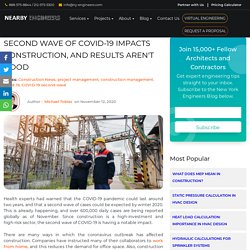
This is already happening, and over 600,000 daily cases are being reported globally as of November. Since construction is a high-investment and high-risk sector, the second wave of COVID-19 is having a notable impact. There are many ways in which the coronavirus outbreak has affected construction. Companies have instructed many of their collaborators to work from home, and this reduces the demand for office space.
Also, construction firms are being affected by the disruption of global supply chains, and the extra safety measures to protect their staff from the virus. New York is the Most Energy Efficient City in the ACEEE Scorecard. The American Council for an Energy-Efficient Economy (ACEEE) has published five editions of the City Clean Energy Scorecard, and New York leads the ranking for the first time in 2020.
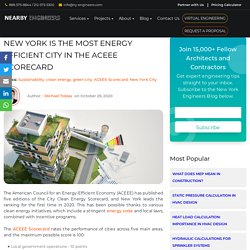
This has been possible thanks to various clean energy initiatives, which include a stringent energy code and local laws, combined with incentive programs. The ACEEE Scorecard rates the performance of cities across five main areas, and the maximum possible score is 100: Local government operations - 10 pointsCommunity-wide initiatives - 15 pointsBuildings policies - 30 pointsEnergy and water utilities - 15 pointsTransportation policies - 30 points NYC leads the 2020 ranking with a score of 77.5, followed by Boston and Seattle, tied at 73.
Consulting Engineers Explain the Difference Between Commissioning and Energy Audits. Commissioning and energy audits are often confused - both services involve a building inspection by consulting engineers, but their goals are different.
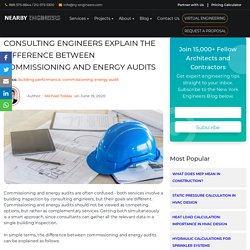
Commissioning and energy audits should not be viewed as competing options, but rather as complementary services. Getting both simultaneously is a smart approach, since consultants can gather all the relevant data in a single building inspection. In simple terms, the difference between commissioning and energy audits can be explained as follows: The goal of commissioning is to keep all building systems operating as specified in design documents and technical specifications.The goal of energy audits is to identify viable measures that improve the energy performance of a buildings, reducing the consumption of fuel and electricity. 3 Simple Ways to Save on Heating this Winter. As winter approaches, the heating expenses of homes and businesses start to increase.
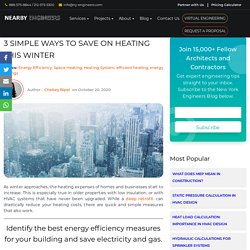
This is especially true in older properties with low insulation, or with HVAC systems that have never been upgraded. While a deep retrofit can drastically reduce your heating costs, there are quick and simple measures that also work. Identify the best energy efficiency measures for your building and save electricity and gas. Contact Us This article will describe three simple measures that reduce heating costs in buildings, which can be deployed quickly and with minimal investment. Construction Safety Investment: An Ethical and Lucrative Decision. Accidents have a significant impact on construction projects, and contractors cannot afford to ignore risk factors.
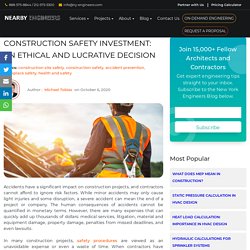
While minor accidents may only cause light injuries and some disruption, a severe accident can mean the end of a project or company. Why Are Solar Panels So Popular in California? The US solar industry experienced major growth within a decade, from 2.5 gigawatts of capacity in 2010, to over 81 gigawatts by mid-2020.
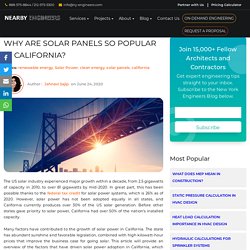
In great part, this has been possible thanks to the federal tax credit for solar power systems, which is 26% as of 2020. However, solar power has not been adopted equally in all states, and California currently produces over 30% of the US solar generation. Before other states gave priority to solar power, California had over 50% of the nation’s installed capacity. Many factors have contributed to the growth of solar power in California. The state has abundant sunshine and favorable legislation, combined with high kilowatt-hour prices that improve the business case for going solar. Resilient Design: Emergency Conditions and Everyday Resilience. Resilient design involves creating a building that handles regular conditions, as well as natural or manmade disaster situations.
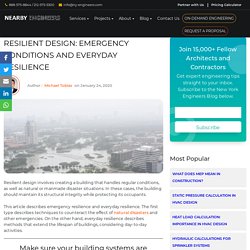
In these cases, the building should maintain its structural integrity while protecting its occupants. This article describes emergency resilience and everyday resilience. The first type describes techniques to counteract the effect of natural disasters and other emergencies. On the other hand, everyday resilience describes methods that extend the lifespan of buildings, considering day-to-day activities. Make sure your building systems are designed to operate during emergencies.
Emergency Resilience. Electric Motors: Choosing Between a VFD and a Soft Starter. Electric motors have many applications in residential, commercial and industrial buildings.
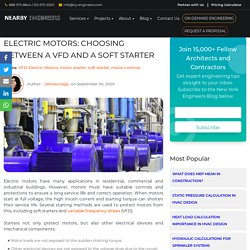
Overcoming Construction Management Challenges Caused by COVID-19. The coronavirus outbreak has affected the economy in general, but each business sector faces unique challenges.

Some companies can continue operating with minimal disruption by using digital collaboration tools. However, contractors have few options because most of their work is completed in project sites. They can use remote collaboration for specific activities, such as engineering and management tasks. Mechanical Engineers Explain Why Many HVAC Systems Use Water to Move Heat. HVAC installations are characterized by the wide variety of system configurations available.
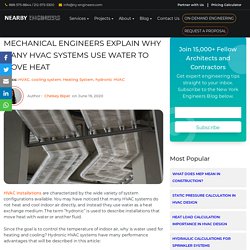
You may have noticed that many HVAC systems do not heat and cool indoor air directly, and instead they use water as a heat exchange medium. The term “hydronic” is used to describe installations that move heat with water or another fluid. Since the goal is to control the temperature of indoor air, why is water used for heating and cooling? Hydronic HVAC systems have many performance advantages that will be described in this article: What Are the Differences Between a PTAC and a Mini-Split?
Packaged terminal air conditioners and mini-splits have similar applications. Both are unitary systems, which means they are designed for individual areas, instead of entire floors or buildings. Improving Comfort and Air Quality with Underfloor Heating. Underfloor heating provides a viable alternative for conventional heating systems. Instead of using forced airflow from above, heat is released at floor level. Ceiling-based heating systems must work against natural convection, while underfloor systems use it to their advantage.
This is beneficial in terms of energy efficiency, occupant comfort, and indoor air quality. There are two main types of underfloor heating systems. Radiant floors use embedded resistance heaters or hot water pipes, which means that the floor itself releases heat. Improve energy efficiency and indoor air quality in your next building project. Energy Efficiency Upgrades: Space Heating Systems. If a detailed energy analysis is performed for a residential or commercial building, the largest load will normally be space heating or air conditioning. Most air conditioning systems use electricity, except in specific cases where another energy source is viable. However, space heating equipment uses a wider variety of fuels. Heating costs can be reduced by upgrading to more efficient units, but changing the energy source is also effective in many cases.
Reduce your building heating costs. The 3-30-300 Rule: Understanding the Real Operating Cost of Buildings. The ownership cost of a building goes beyond the construction budget. How Can MEP Engineers Improve a Building? MEP engineering is often associated with the design stage of projects, and getting approval from the local building department. However, there are many ways in which engineering services can benefit existing buildings. This article will provide an overview of some common building issues and areas of opportunity, and how a MEP engineering firm can help you.
Overview of the EDGE Certification for Buildings. EDGE is a green building certification system developed by the International Finance Corporation, which is part of the World Bank. EDGE stands for Excellence in Design for Greater Efficiencies, and the certification has the goal of reducing the environmental impact of buildings in three areas: direct energy consumption, water consumption, and the energy footprint of construction materials.
EDGE was developed by the IFC to address the environmental footprint of the building sector, focusing on emerging economies. What Is Self-Compacting Concrete? How Architects and Engineers Can Help Prevent COVID-19 in Buildings. Improving Indoor Air Quality With the Right Construction Materials. Indoor air quality projects often focus on existing buildings, which are already occupied.